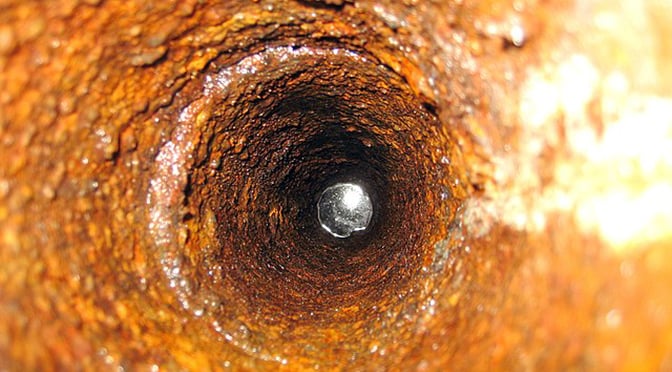 A three-year study of tubercle formation, the most common cause of cast-iron pipe failure, revealed that the accumulation rate was fastest during the first year as compared to the following two years. The study revealed that there was no relationship between tubercle height and corrosion/pitting depth on the pipe wall. (Credit: Schekinov Alexey Victorovich/Wikicommon)
A three-year study of tubercle formation, the most common cause of cast-iron pipe failure, revealed that the accumulation rate was fastest during the first year as compared to the following two years. The study revealed that there was no relationship between tubercle height and corrosion/pitting depth on the pipe wall. (Credit: Schekinov Alexey Victorovich/Wikicommon)
Editor's Note: Part one of this series covered the basics of sanitary drains and their connections as well as typical points of failure.
Recommended For You
Want to continue reading?
Become a Free PropertyCasualty360 Digital Reader
Your access to unlimited PropertyCasualty360 content isn’t changing.
Once you are an ALM digital member, you’ll receive:
- Breaking insurance news and analysis, on-site and via our newsletters and custom alerts
- Weekly Insurance Speak podcast featuring exclusive interviews with industry leaders
- Educational webcasts, white papers, and ebooks from industry thought leaders
- Critical converage of the employee benefits and financial advisory markets on our other ALM sites, BenefitsPRO and ThinkAdvisor
Already have an account? Sign In Now
© 2025 ALM Global, LLC, All Rights Reserved. Request academic re-use from www.copyright.com. All other uses, submit a request to [email protected]. For more information visit Asset & Logo Licensing.








